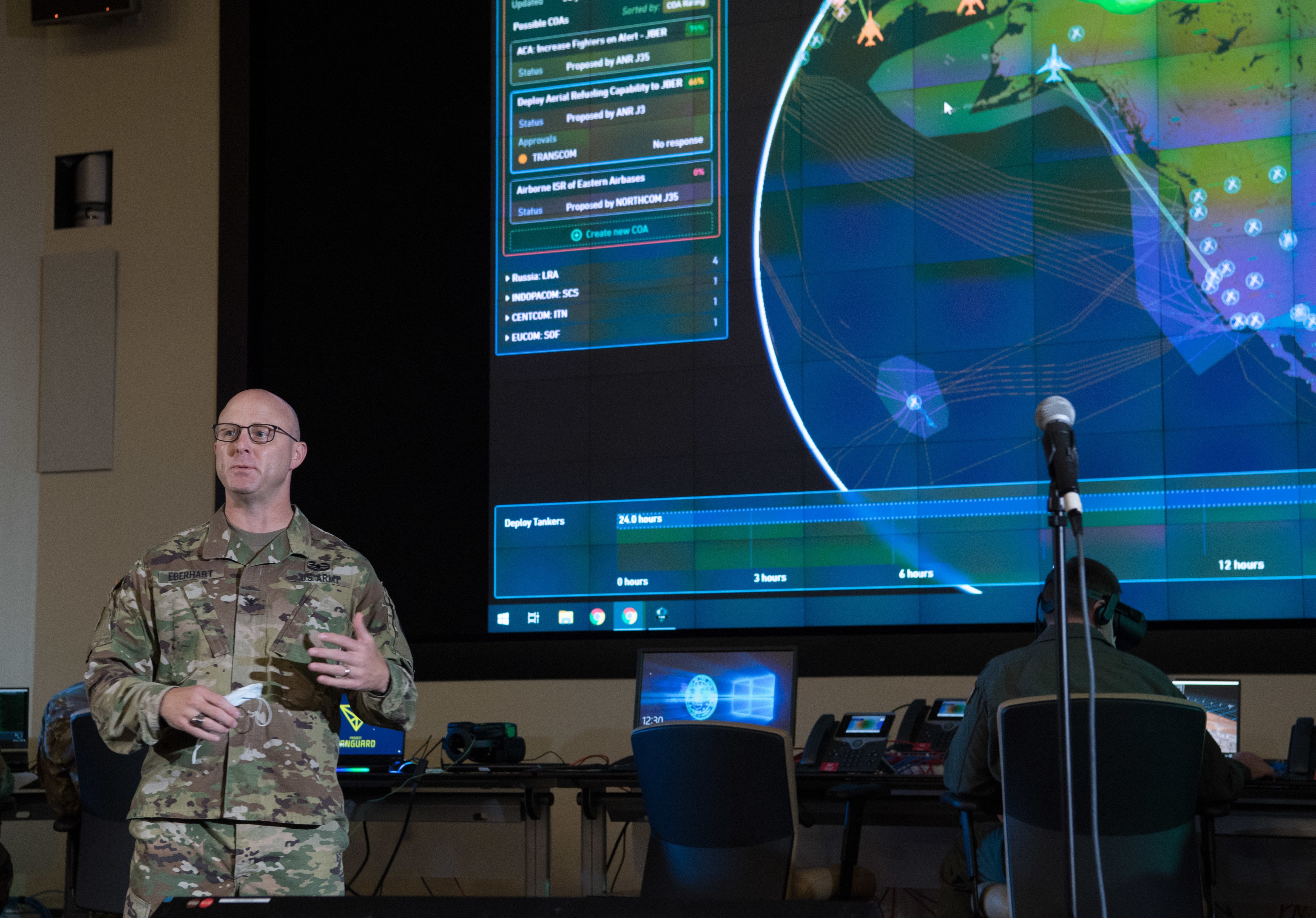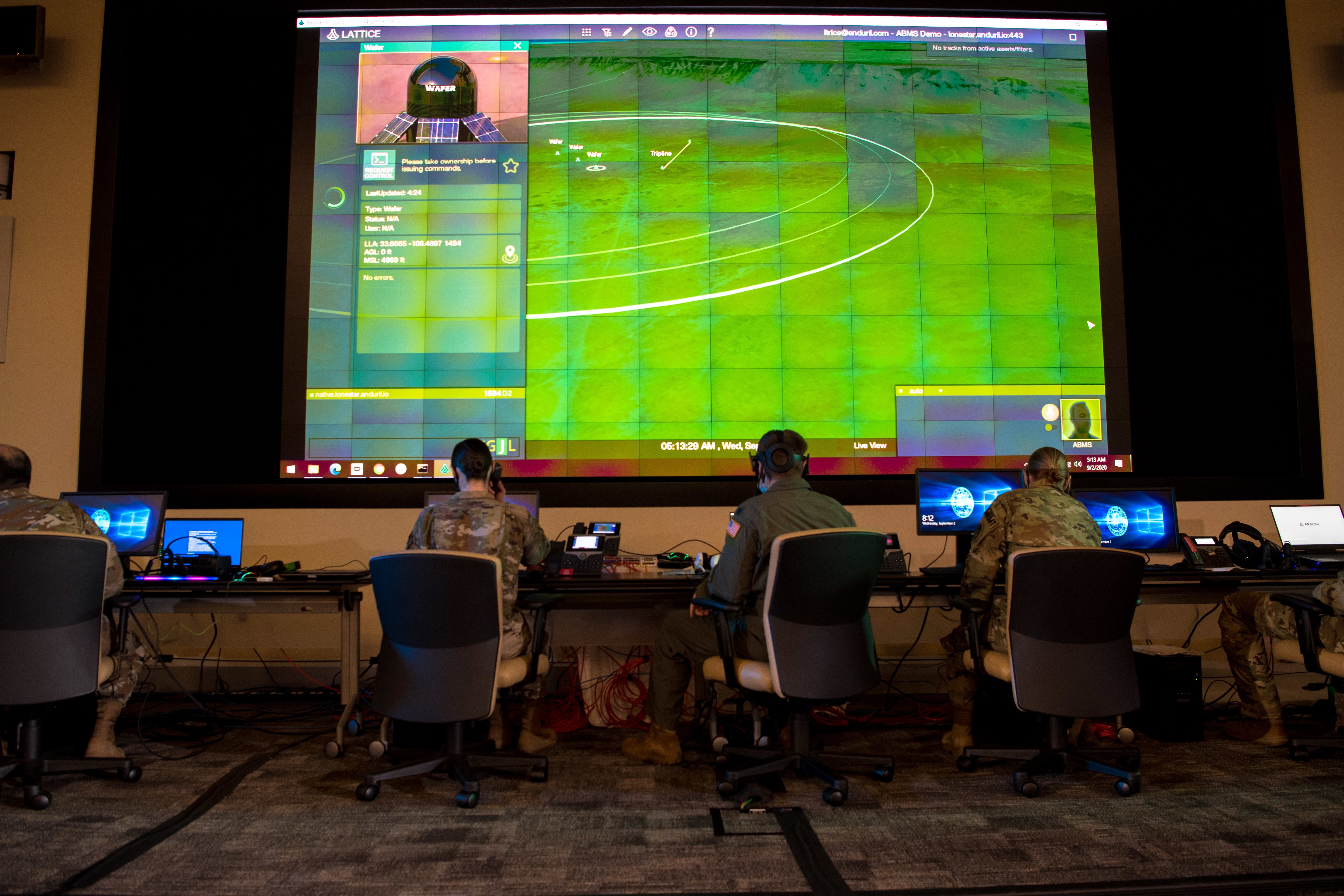Editor’s note: This article is part of a story package about what the Pentagon wants to spend on its future joint war-fighting concept, Joint All-Domain Command and Control, based on its fiscal 2022 budget request.
Air Force budget: Congress dealt ABMS a blow, but experts see progress | Army budget: Proposed modernization increases show Army sees joint operations as ‘top priority’ | Navy budget: Classified Navy JADC2 budget plan has a few spending hints
WASHINGTON — The Pentagon’s new budget plan provided a first look at how the military is building investment in its signature future war-fighting strategy, pumping money into linking networks and processing data for a connected force.
On one hand, experts said the fiscal 2022 proposal is a marker for Joint All-Domain Command and Control that shows shifting priorities and encouraging signs after 18 months of spending on the plan for U.S. superiority against highly capable adversaries such as China or Russia.
But the budget left many details murky, with chunks of classified spending, no top-line figures and much of the funding mixed in larger programs, raising questions with insiders on issues including whether command and control will get enough money or how the services will combine separate efforts.
By one conservative estimate, a national security expert expects the Pentagon to spend more than $1 billion on JADC2 next year. Observers predict funding will ramp up in budgets to come, with the Joint Chiefs of Staff already asking Congress for future JADC2-specific modernization money and the project’s top leader proclaiming “delivery time” has arrived now that Defense Secretary Lloyd Austin signed a formal strategy.
“It’s great to see money going toward better networking, resilient communications and more adaptable communications. Those are critical things for the DoD, but they are not, in and of themselves, command and control,” said Eli Niewood, vice president for intelligence and cross-cutting capabilities at Mitre, which runs federally funded research centers for government technology development. “What we think really needs to happen for JADC2 is better capabilities within decision-making [and] within sense-making. It’s much harder to find that money than it is to find the money going into networks and radios.”
Under the Defense Department’s JADC2 vision, the military could take data collected from anywhere, process it with artificial intelligence to target potential threats, and push that information to the relevant weapon system or war fighter over emerging networks in near real time.
Experts expect future budget projections, when they’re eventually released, will provide a stronger picture of how the investments might change and grow. Air Force and Army demonstrations, which will take place again later this year, have shown progress at the ground level to link sensors and shooters at unprecedented speed. Still, accountability is hard to gauge because the services do not outline clear milestones and timetables for those events.
Some of what’s unknown about JADC2 investment stems from the fact that the money is spread across many programs that feed the services’ so-far disconnected individual efforts: the Air Force’s Advanced Battle Management System, the Army’s Project Convergence and the Navy’s classified Project Overmatch. Further muddying the waters, only ABMS has a budget line as the sole program of record in the bunch.
Additionally, billions for service modernization efforts contribute indirectly.
But some spending insights can be found. A conservative estimate from Travis Sharp, a research fellow at the Center for Strategic and Budgetary Assessments, is that the Defense Department is requesting at least $1.2 billion in FY22 for programs that directly support JADC2. That number could underestimate the total “perhaps significantly,” he said.
Sharp searched for JADC2-specific terms, such as “Project Overmatch” or “fully networked command and control,” and he didn’t include programs that only partially support the concept. The bulk of the $1.2 billion is in requests from the Office of Secretary of Defense, which runs several joint command and control research programs, and for the Space Development Agency, which is developing a new space-based mesh network to connect sensors and shooters all over the world via satellite.
The challenge in estimating a total price tag is “due to the difficulty of assigning dollar values to programs that indirectly support JADC2,” Sharp said.
For example, the Navy noted that a broad proposed information warfare increase would help Project Overmatch.
After the services listed several JADC2-enabling programs on their unfunded priority wish lists to Congress, Marine Corps Lt. Gen. Dennis Crall, the chief information officer/J6 of the Joint Chiefs, tried to assuage any concerns that the services won’t have enough money for JADC2. “I firmly believe we are adequately resourced to get done with the experimentation phase we’re talking about,” Crall said at an early June press conference.
RELATED

At an Army event that same week, Brig. Gen. Robert Parker, head of the JADC2 Joint Cross-Functional Team, said military leaders have had “encouraging” conversations with lawmakers about adding JADC2-specific funds to incentivize modernization and adopt promising prototypes.
“The critical thing is what is being invested in terms of a JADC2 capability versus what the services are investing in to modernize their force and to close some critical gaps within the force,” said Scott Lee, cross-cutting priority lead for JADC2 at Mitre.
The lack of clarity reflects broader issues with the JADC2 development structure. While the services have taken steps toward collaboration, it’s not clear how the independent efforts fit together. The Joint Chiefs are working toward a top-down plan, but for now each service has a unique approach with varying levels of transparency.
“Regarding JADC2, the issues go beyond funding. It’s much more important that the services are aligned, that the ‘J’ in JADC2 truly be ‘joint.’ The services aren’t there yet, but they’re working to find a mutual path forward. Once that is in place, they can look at funding with a more keen eye,” said Mark Lewis, executive director of the Emerging Technologies Institute of the National Defense Industrial Association.
RELATED

Andrew Eversden covers all things defense technology for C4ISRNET. He previously reported on federal IT and cybersecurity for Federal Times and Fifth Domain, and worked as a congressional reporting fellow for the Texas Tribune. He was also a Washington intern for the Durango Herald. Andrew is a graduate of American University.




